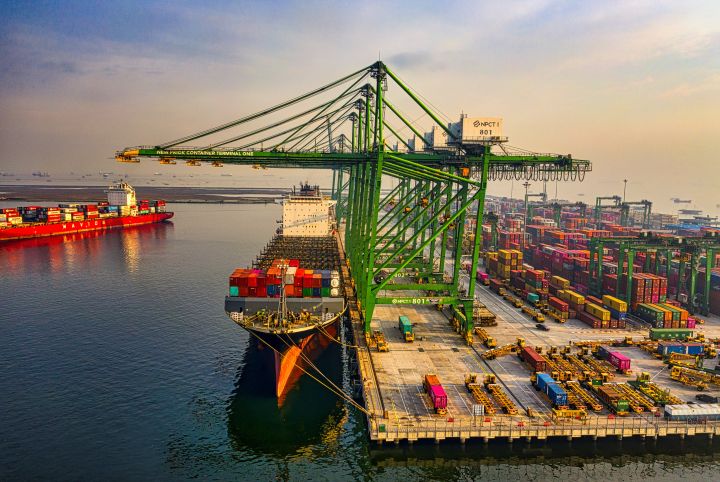
As a $505 billion industry in the US, shipping and transportation contribute a significant amount to our GDP and keeps many of the other businesses in this nation going. The industry that never stops moving is one of the most vital cogs of our economy, yet it is facing new challenges based on a number of current factors.
With the move of many US-based employees to working from home and receiving their packages there, the mix of meals served & eaten in the US changing from 60% OOH (Out of Home) to 60% at home changing the food shipping dynamic (one of the largest parts of the shipping industry), the lockdowns forcing large numbers of small businesses closed, and changing demographics have all required adaptation to keep goods shipping, but thankfully the industry is extremely adaptable.
Thirty years ago, the industry was far simpler. Shipments were kept on a reasonably set schedule, domestic production and manufacturing had many of our products coming from US manufacturers to go to US consumers, and despite seasonality for certain industries, the shipping and logistics industry ran with the precision of a Swiss watch.
The advent of JIT (Just In Time) shipping and moving from a domestic production to an import-based economy has altered when, how much, and where many of our shipments are moving to and from. While these changes have led to the shipping industry looking like a very different animal than it was just a decade ago, as a resilient machine the industry keeps moving forward.
Whether you work in the logistics and transportation industry or are a business that depends on it (as nearly all do), changes, disruptions, and difficulties may greatly affect you and your business. Let’s go through some of those challenges that the industry currently faces so you are prepared for any issues that they may cause.
Driver Shortage
In the not-too-distant past, being a truck driver was considered a pretty good job for what it entailed. The hours are long, the distances great, and the job requires drivers to be away from their families for long periods of time. But their pay has always been considered pretty good, and it is one of the professions in which a person can make a decent wage without a college degree (but a CDL is often a necessity).
The changing times have led to a substantial shortage of truck drivers for multiple reasons. For one, many of the youth today do not see the opportunity it provides in the same way their parents or grandparents did. Other youths see the rapidly advancing technology and understand the potential for self-driving vehicle technology making the profession a thing of the past in the not-too-distant future.
With the aging demographics of drivers setting 25% of the current crop of truck drivers to retire in the next 10 years, the industry has started to sound the alarm about a potential catastrophe if the situation cannot be resolved. We are in a precarious situation where self-driving technology is nowhere near advanced enough to be on the road anytime soon, but the younger generation also doesn’t see much future potential because they believe that it will be before long.
In the past, increased pay and benefits could potentially rectify the dilemma, but with the chance of seeing an entire career field disappear before you are halfway through your career, that may not be enough.
Manufacturing and microchip shortages
The COVID-induced lockdowns for the past two years and the current round of lockdowns in Shanghai have led to major supply chain disruptions around the world. The old thinking of a globally-connected supply chain to source markets around the world for various products that are shipped to and assembled in one country has found a hiccup, in that lockdowns in any one country can cause massive disruptions across the globe.
When people think of microchips, they often think that a shortage of that product may only affect electronic devices, but in our current technologically-driven world microchips are required to run many different products, cars and trucks included.
Manufacturing and microchip shortages have led to disruptions and setbacks in the commercial vehicle industry, increasing the lead time for some new vehicles to up to 26.2 weeks. Even domestically, some of our largest commercial vehicle manufacturers are looking at delays for US customers because of the need to procure certain parts or materials globally.
Increased fuel costs
Even though gasoline has reached $7 per gallon in places like California, many commodities brokers and analysts suspect that we have not even come close to the peak fuel prices that we will see. A large number of factors, from ESG ratings lowering investments in oil production to lowering domestic oil drilling and the Russian sanctions (Russia is one of the world’s top oil producers and members of OPEC), have put great constraints on the supply and subsequent cost of oil. One founder of a Relocations company had this to say: “We’ve definitely seen the impact of our long-distance moves. There are rising costs on our end, which makes it harder to stay competitive in the market pricing for our services. Many moving companies have seen this impact on their costs as well, and that’s just in one niche.”
The shipping industry will have to pass most of these increased costs on to their customers, which in turn will increase costs to the US shopper and potentially disrupt demand for non-essential products, especially with a shrinking US economy and potential recession on the horizon.
Increased import volume
On top of all of these issues, the move from a majority domestic-based manufacturing economy in the US to a majority import-based economy over the past several decades has drastically increased the volume of imports that need to be shipped to a port, unloaded, and driven across the country by various players in the supply chain process.
The pandemic led to the realization by many Americans that none of our medicines are produced domestically anymore (even penicillin), but many still don’t quite understand just how much the move to globalization has made us dependent on imports. With the potential for more expensive gas and subsequent cost of goods increases in the near future, perhaps the onus for a change back to a majority of domestic manufacturing will soon be upon us.
How to Offset These Challenges
Despite all of these potential issues on the horizon, both the shipping industry and the American people as a whole are extremely adaptable and resilient. Technology solutions already exist that can help to alleviate several of these issues, as the COOP platform by Ryder provides the ability for businesses who have underutilized commercial fleets and others who would prefer to save money by transporting their own goods to connect with each other.
If that isn’t something that sounds appealing to you, the option of selling your underutilized vehicles outright will at least help take them off of your balance sheet until your situation changes and the need reemerges. Entrepreneurs and business owners need to be scrappy and think on their feet, especially when times are tough. “When life hands you lemons, make lemonade.” Just because things are changing doesn’t mean they have to be for the worse.
Whether supply chain issues, changing demand, or seasonality have part of your commercial fleet sitting idle, or increasing fuel and transportation costs have led your business to ship your own products, there are always options that will allow you to persevere and thrive. “This too shall pass,” was a mantra obviously not spoken by an entrepreneur. You don’t have the luxury of sitting on your hands and waiting for things to change on their own, but thankfully there are always options and opportunities that will allow you to come out of any troubles even stronger.
We hope you found this blog post on The Biggest Challenges The Transportation Industry is Facing, useful. Be sure to check out our post on How Outsourcing Helps Transportation and Logistics Industry for more great tips!
Have Experience in the Moving Industry? Want an Additional Income Stream? Work With All Around Moving!
Partner with All Around Moving & join the Work With Us program. We will help you make money arranging professional moving services, by establishing your own moving consultant business operation. Click here to learn more.





